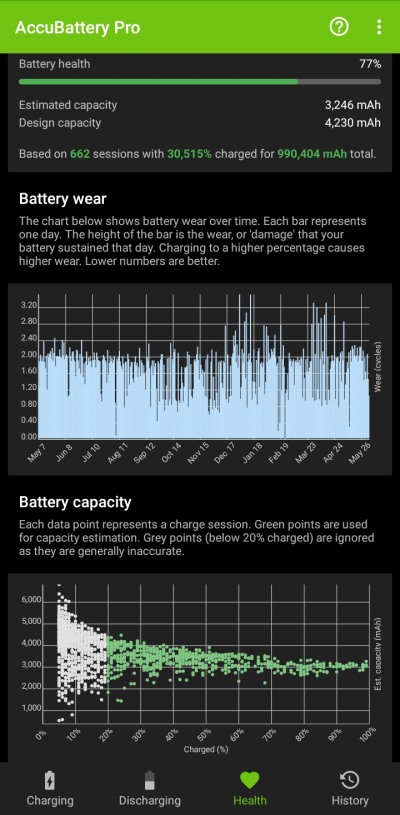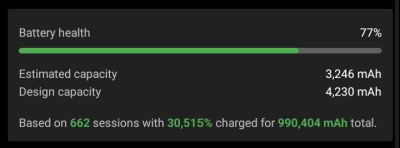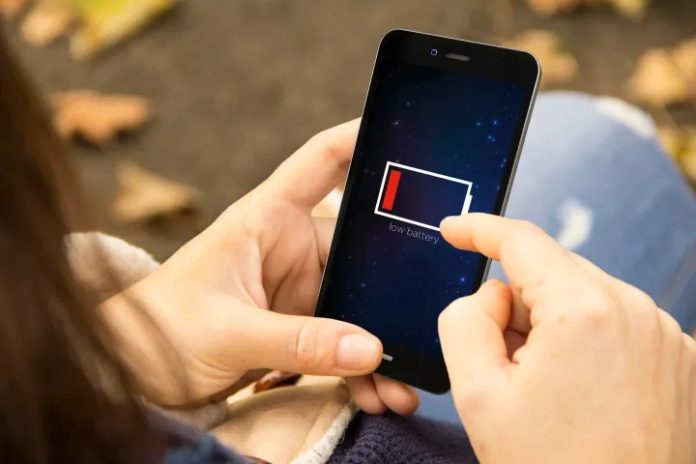How to Check Battery Health Life in Android Phone? The battery in a phone is just as important as the phone’s software or hardware. We used to get smaller batteries for our phones, but those days are long gone. I’m talking about the “800-1000 mAh capacity battery.” As time went on, the power of our batteries changed, too. In this day and age, it’s not unusual for a phone to have a 4000 or 5000 mAh battery. Even a cheap phone will have a battery with 4000 mAh.
Most brands offer different battery sizes for their ever-growing number of phone models.
Now you can find a phone that meets your needs for how much battery it uses. But even with such a huge capacity, the battery will run out of power in no time, no matter how big it is.
Because of apps and UIs that use a lot of power. To use your phone, you will have to charge it again and again. But do you know that charging your battery all the time is bad for its health? Don’t worry, because I’m going to talk about that in this article. I will also tell you how to check the health of your battery and how to keep it safe.
How to Check Android Battery health?
Most Android phone brands don’t come with a built-in way to check the state of your battery. But there are apps that are designed to do just that. Today, I’ve chosen a great app for you called “AccuBattery.” This can not only check the health of your phone’s battery, but it also has a lot of other helpful features. Here’s a quick look at some of the great things about it:
- Check how much capacity your battery has right now.
- You can set an alarm to let you know when your phone has reached the percentage you want while it is charging.
- Check to see how much your battery has worn down over time.
- Check your phone’s charging and discharging speeds.
- Check the time your screen was on or off.
- You can see how much battery each app on your phone uses and control how much power they use.
- Speed of charging/speed of discharging, etc.
Now let me give you a detailed guide on how to use the app to check your phone’s battery health:
When you open the app, you’ll see a list of tabs at the bottom. One of these tabs, called “health,” is at the very bottom. When you click it, you’ll see a menu with a lot of information about the health of your battery. Here’s what it looks like:

At the top, you’ll see a card with the words “Battery health,” “Estimated capacity,” and “Design capacity.” Battery health is how much power your battery has right now.
Estimated capacity just means what your battery’s real capacity is right now. And “Design capacity” is the capacity of space your phone had when it was first made.
For example, in the picture, you can see that the Estimated capacity is 3246 mAh and the Design capacity is 4230 mAh. The estimated capacity is low because the battery’s capacity has decreased over time due to multiple charging cycles. So, the battery can only hold 77% of what it could hold before.

A charge cycle is simply draining a battery all the way down and then charging it to its full capacity. For instance, if your battery has completed from 100% to 0%, it has gone through one charge cycle. Similarly, when you charge it from 0% to 100%, it has completed another cycle.
Tips to Safeguard your Smartphone Battery
Phones have become very important to us. On our phones, we do a lot of important work.
And we have to take good care of the phone’s battery if we want it to work. Here are some tips and tricks to keep your battery healthy:
Don’t Charge your Phone to 100%
Yes, you shouldn’t charge your phone all the way to the top. To charge to the full capacity, one charge cycle must be used. And a typical battery can be charged and used up to 1000 times.
Don’t Discharge it to 0%
When you run the battery down to 0%, it takes a big hit to its health. Because the first 10% of recharging uses a lot of power, and more power means more heat. And heat is something that hurts our batteries.
Don’t Overheat your Phone
Heat and batteries don’t get along too well. When your phone gets warm, you shouldn’t use it. Too much heat causes the chemicals in the batteries to react, which lowers their capacity. The battery can also explode because of too much heat. Also, it’s not a good idea to use your phone outside when the sun is very hot. It’s for your safety and the safety of your battery.
Check Whether Certain apps are Draining battery in the Background
Apps like Facebook, Snapchat, Twitter, Instagram, and even WhatsApp are known to drain your battery. It’s best to stop those apps from running in the background. Not only will this save your battery, but it will also save your internet data. In the battery settings of many phone brands, you can put apps on hold.
Use your Inbuilt Power Saving Feature
Every brand has a way to save power built into its settings these days.mKeep it on when you’re not using your phone very much. This makes the phone’s battery life last a lot longer.
Don’t Overcharge your Phone
It is best not to overcharge your phone every single day. Think back to the charge cycle. It’s strongly suggested that you charge your phone to 80%. Charging up to 80% wears out the battery after 0.06 cycles, which is a great way to extend it last longer.
Use Airplane Mode
When you’re travelling, you can save your battery by putting your toll in “aeroplane mode.”
When you travel, your SIM card goes into roaming mode, which drains the battery.
Watch YouTube Videos in Lower Quality
When you watch 4k videos on YouTube or any other streaming service, your battery will drain quickly because the processor has to work hard to process the video.
Battery Health Life in Android Final Words:
So, these are some tricks and tips that can help you get more use out of your battery.
All of these tricks have been tried and true for a long time. I hope this article answers your questions about the health of your smartphone’s battery. If you have any suggestions or comments about How to Check Battery Health Life in Android Mobiles?, then feel free to drop them in the box below.
